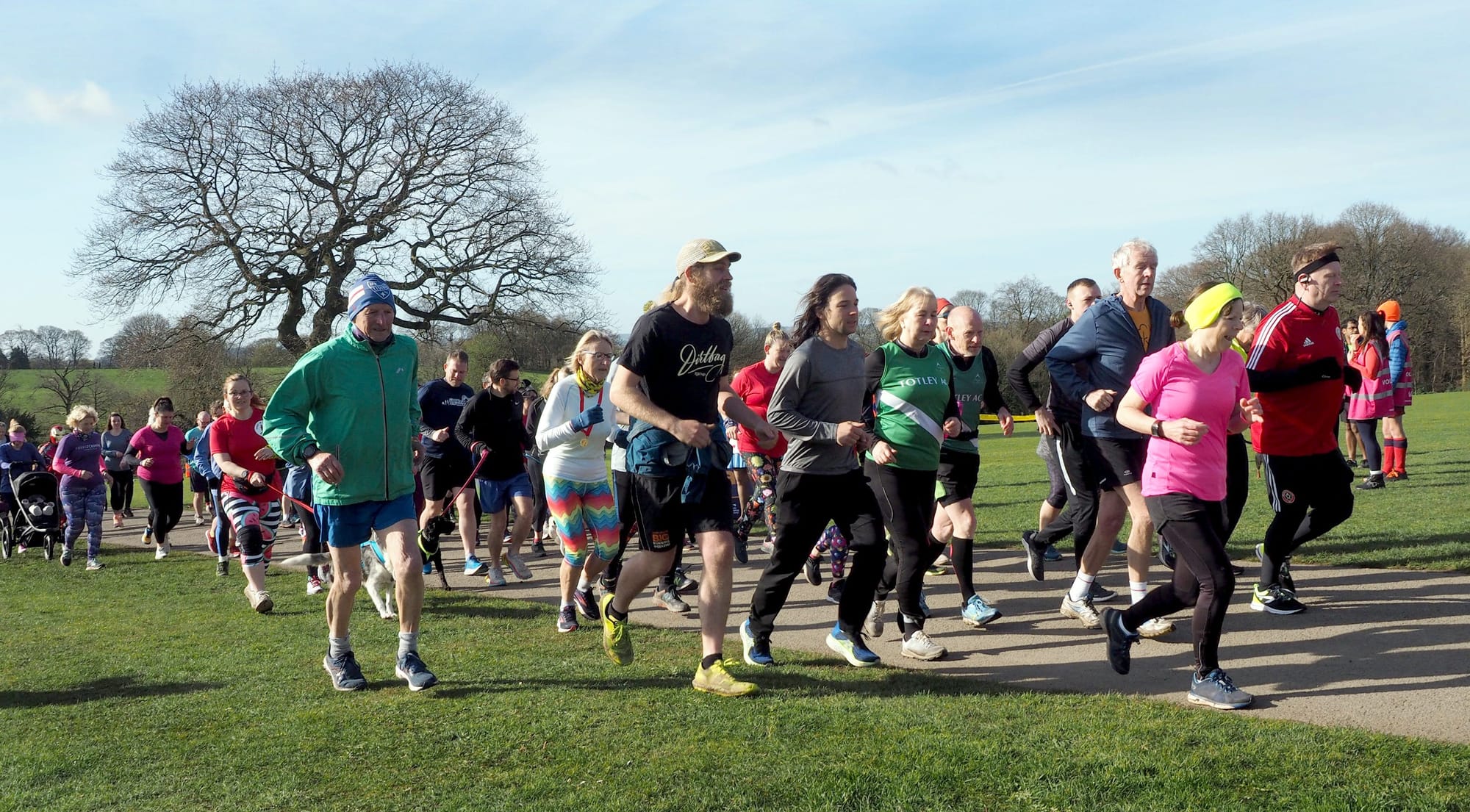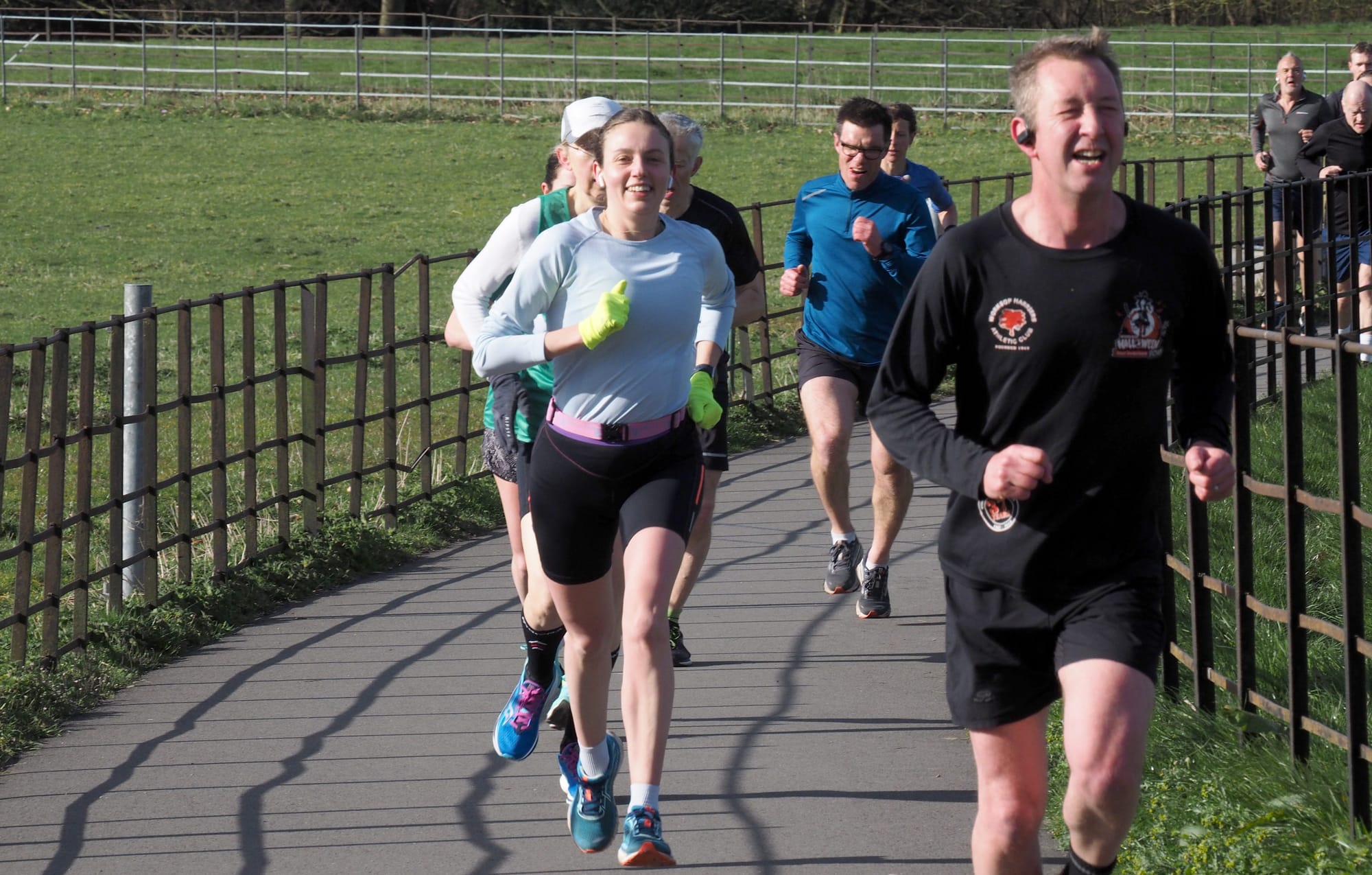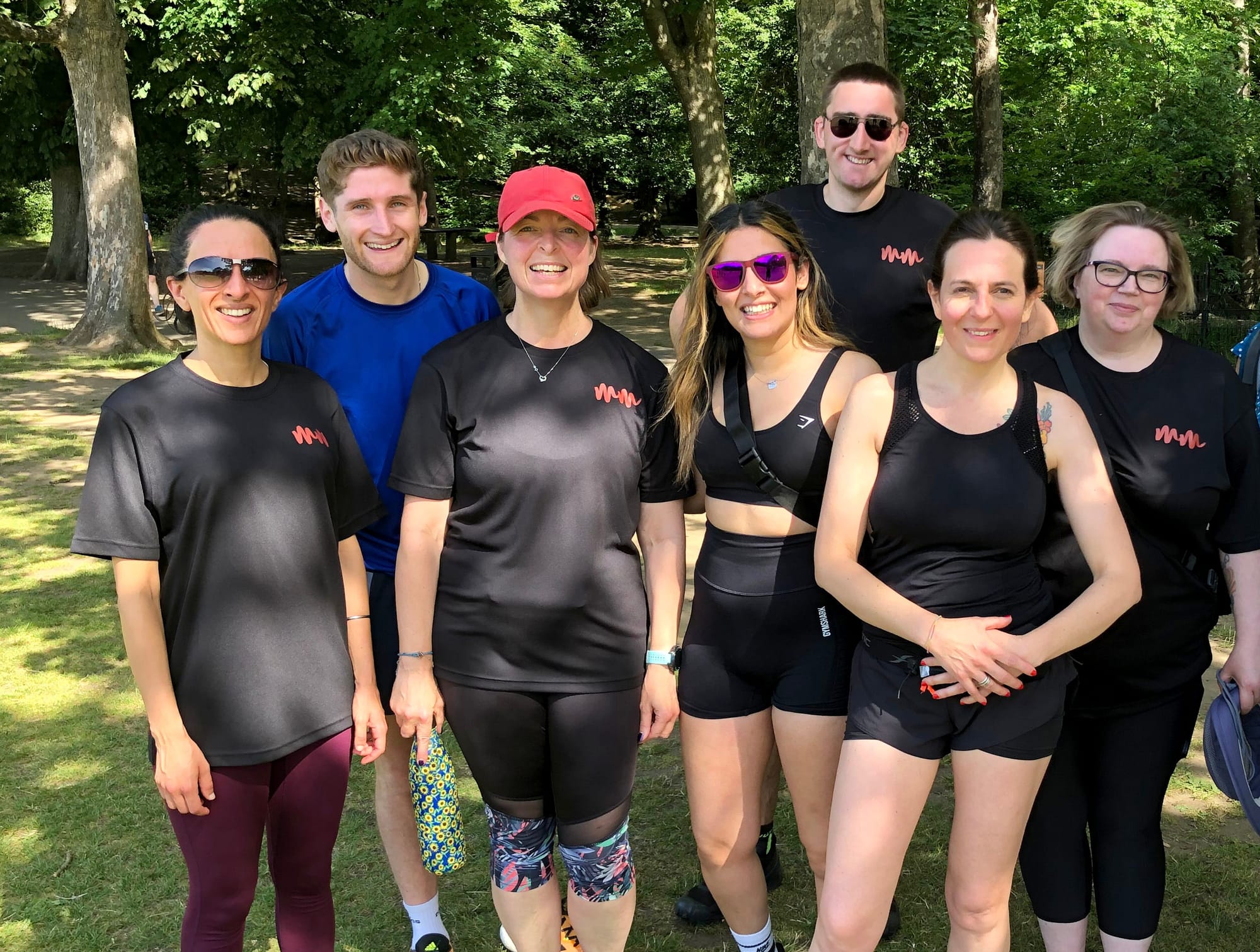After pretending to pant up the gentle inclines of Endcliffe Park behind me, twice, my son-in-law is biding his time. We’ve now skipped over the river bank tree roots, and are heading home.
“Sprint finish?” he says and off he goes. I try and keep up, picking off a grey-haired rival, and then notice a thickset tattooed man just ahead. A sprinter, obviously. We slip past him on either side. I hear a grunt behind, and the fellow parkrunner, who boasts a scar to his face and who I wouldn’t want to get on the wrong side of, storms through to the finish line, just ahead of me.
“Well done, mate,” I say, bumping elbows cautiously.
“I wasn’t having that,” he grins, as we line up for our finish tokens.

The parkrun phenomenon is the world’s largest running event, by quite some margin, counting almost a quarter of a million people taking part every Saturday in more than 20 countries. With six adult parkruns (and another just across the border at Rother Valley) Sheffield is well served for those who fancy a free 5km run or walk before Saturday breakfast, and we Outdoor Citizens take up the challenge, with 1,500 or so regular participants, 40% higher than the national parkrun participation rate.
“Parkrun is a community event with a 5k in the middle of it,” says Steve Haake. “It’s for everyone, not just lycra-clad people.”
First of all you get some trainers. Then you go and stand in a field early on a Saturday morning with up to 600 other folk before you all sprint off at 9am in the same direction trying not to trip over any small children or dogs. After you’ve put yourself through 20 minutes of pain, 30 minutes of gentle jogging or 45 minutes of strolling through the park chatting to friends and complete strangers, it’s all over, and you go for a coffee and cake with your breathless mates, because you’ve earned it.

Steve Haake is professor of sports engineering at Sheffield Hallam University, and has run 410 parkruns so far, volunteered at 50, and spent several years poring over the science of community running as chair of the international parkrun organisation’s research board.
He has an OBE for services to sport, along with a professor’s beard, the build of a marathon runner, and the enthusiasm of a Springer Spaniel.
After years of pushing sport and activity as better than drugs for many long-term physical and mental health issues, Steve and colleagues from Sheffield’s “Move More” activity initiative are now getting the message across to health professionals.

Steve’s recent work is slicing data from over 60,000 respondents to national and international parkrun surveys into timed sections. The fastest people at the front are mostly male, and motivated by times and training regimes, he says. Then, as you go further back into the parkrun field past the 30 years olds you find a midpoint 5k time of just over 27.30, with equal numbers of men and women, aged around 40-45, many running with their kids, motivated by social reasons like spending time with friends and family.
“I’d say to GPs, think about parkrun as something you can prescribe,” he says. “And if you don’t know what it is, go along, but go to the back, not the front, and talk to people there and you’ll find it’s the people you’d prescribe physical activity to.”
At the back of the parkun field, where people are jogging or walking round, are older participants and lots of people with health conditions including obesity, type 2 diabetes, anxiety, depression, arthritis or asthma. The slower parkrunners are generally motivated by wanting to lose weight, to improve their health, or by being encouraged to attend by a family member, Steve says.

Following through the data on the parkrunners who did virtually no exercise when they first registered, most said after becoming parkrunners they were exercising 2-3 times weekly, which is close to the government guideline of 150 minutes of gentle or 75 minutes of vigorous activity every week.
Rizni Marzook went a bit further. After a heart attack at the age of 38, when he weighed 92 kilos, he had to learn to walk again. He began gently using a treadmill, then tried running outside, then parkrunning, and has now completed over 400 parkruns, raised over £60,000 for the British Heart Foundation and last week nailed a new personal best time at Endcliffe Park of 20:46 at the age of 50.
“I’ve had massive benefits physically from parkrun, but it’s also helped me socially, emotionally and mentally, because really what you’re doing is competing against yourself,” he says.

The most impressive findings from the parkrun surveys were not about physical fitness at all, says Steve Haake. Across the board from 17 minute to 50 minute parkrunners, the respondents said the most important things they got from parkrun were a sense of achievement, feeling happier by taking part, feeling better in their mental health and feeling part of a community.
And for the people who volunteer to help organise their local parkrun, these feelings were even stronger. If you marshall a parkrun, not only do you have a nice morning stroll in the park, you get dozens of happy runners smiling and shouting thanks to you, which means more than you think.
Steve Haake says that the wellbeing benefits we get from social interactions come from close friends and family, and from less well known acquaintances just saying hello every now and then. Surprisingly they’re both equally important for our mental health, but we lost the latter during the pandemic lockdowns. So happy folk saying hello and thanks to you just now is actually really good for you.

The pandemic turned off the tap of regular new parkrunners, says Steve Haake, just when participation levels were growing. Across Sheffield, numbers are still down on 2019 levels, but gradually returning, partly because people whose mental health was battered by the pandemic recognise the benefits of getting outside and meeting people.
(A point emphasised recently in a large study by the NHS’s National Institute of Health Research, which effectively showed that spending time outdoors with other people will usually improve our feelings of wellbeing more than prescription drugs.)
“I regularly recommend Endcliffe parkrun to my patients as a means of improving their wellbeing,” says Dr Seleena Thukral from the Hollies Medical Centre in Nether Edge. “And I think patients do get it now. When the penny drops, it’s amazing to see their health transformed by a change in their lifestyle.”

A criticism of parkrun, particularly at Endcliffe, is that it mostly serves the middle class. The data tends to confirm this, says Steve Haake, not least since the poorest and least healthy people in society have so many other issues to contend with before finding some trainers, organising the kids or other family members and leaving the house for a run at 8.40 on a Saturday morning.
But the data also shows that while three-quarters of the UK population is within a parkrun distance (5km) of their local parkrun, the most deprived communities are even closer.
Sheffield’s parkruns span most of the city, from the biggest (Endcliffe at an average of 453 participants per week) and Millhouses (295 per week) in the affluent south west, to Concord, high above Meadowhall between Firth Park and Shiregreen, which started in 2011 as the 2nd Sheffield parkun and now has an average of 74 weekly runners.

The varied hills and views make each one pretty unique: Graves, Manor Fields and Concord have gruelling hill climbs, while Hillsborough and Endcliffe are bumpy but busy, and Millhouses is three laps and dizzying. Rother Valley is a flat, one lap, personal best attempt (but watch out for windy days out there).
Graves, near Norton, Jordanthorpe and Heeley was the city’s third parkrun (and the first linked to a GP surgery), and now boasts 187 weekly runners, Hillsborough attracts 243 participants from north Sheffield, while the more recent Manor Fields (aka Sheffield Castle — 59) and Rother Valley (229) serve the city’s east side. And a new inner city parkrun is on the way soon at Parkwood Springs near Shirecliffe and Burngreave. The five existing parkruns in the north and east are all among or within a few kilometres of some of the city’s most deprived communities.
“The challenge for the city is to make sure parkrun is accessible for those communities,” says GP Dr Mike Lyons. And GPs prescribing parkrun are very much part of that accessibility, says Steve Haake, since the data shows that people visiting GPs are likely to follow advice to take up physical activity if their doctor tells them to.

The next Saturday my son-in-law has other things to do, so I chat to my fellow runners before the run, and then steel myself to try quite hard this time again, as men of my age tend to do at parkrun. As a type-1 diabetic, I’m one of those people who doctors would prescribe parkrun to if I wasn’t already doing it, in the hope of staying alive and in reasonable health for a few more years.
After a lap of puffing and panting, I notice a small boy ahead of me, running well. It seems bad form to try and overtake, I tell myself, so I stay about ten metres behind until the finish line beckons, and he accelerates away as if he knows I’ve been there all along.
“Well done lad,” I say, not at all grudgingly. “How old are you?”
“I’m 12,” he says. “Well done yourself.”

Comments
Sign in or become a Sheffield Tribune member to leave comments. To add your photo, click here to create a profile on Gravatar.







